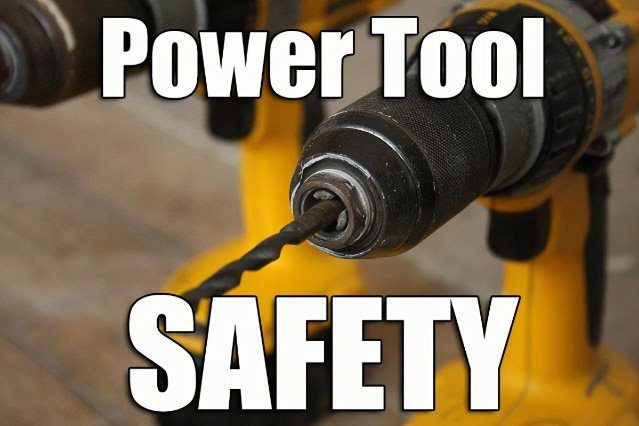
Hand-operated tools often pose the risk of lacerations, contusions, and muscle strain. Obviously, power tools pose a higher risk of severe injury because points of contact can transfer a large amount of mechanical energy from the tool to small areas on the body. The risk of laceration becomes risk of amputation with power tools; risk of contusion becomes risk of crushing. In addition, users of hand and power tools may also be exposed to hazardous airborne contaminants, flying debris, and electrocution, among others risks.
Some tips for the general tool safety includes:
- Use the right tool for the job. For example, do not use a screwdriver as a chisel. Do not attempt to modify or adapt a tool to extend its capabilities.
- Inspect every tool before use and remove damaged or defective tools from service. Do not use tools with defective, broken, or compromised handles, guards, or ancillary parts (e.g., warped, dull, or cracked blades, marred, or chipped drill bits, checked hoses, frayed cords, sprung gripping surfaces, mushroomed heads, etc.). Most power tools must be equipped with guards and positive pressure switches (or other safety controls).
- Operate and maintain tools in accordance with manufacturer recommendations.
- Store tools in a clean and dry location.
- Use the proper apparel and Personal Protective Equipment. Avoid loose clothing and jewelry.
- Take action to minimize ancillary hazards posed by the workplace. For example, remove accumulated debris or tools to prevent trips; dry or clean up slippery surfaces; use portable lighting in poorly lit areas.
- Non-sparking or intrinsically safe tools may be required in the presence of flammable vapors.
Portable Power Tools
- Use only with properly placed, adjusted, and functioning guards. In general, the exposed moving parts of power tools need to be safeguarded.
- Do not carry a tool by the hose or cord.
- Do not yank on a cord to disconnect the tool from the receptacle; firmly grasp the plug.
- Avoid accidental starting; do not hold your fingers on the switch button while carrying a plugged-in tool.
- Keep hoses and cords away from heat, oil, and sharp edges.
- Disconnect tools from their power source before servicing, cleaning, when changing accessories, and when not in use/attended.
- When a temporary power source is used for construction, a ground-fault circuit interrupter should be used.
- To protect the user from shock and burns, electric tools must have a three-wire cord with a ground and be plugged into a grounded receptacle, be double insulated, or be powered by a low-voltage isolation transformer.
- Do not use electric tools in damp or wet locations unless they are approved for that purpose.
- Keep all people not involved with the work at a safe distance from the work area.
- Secure work with clamps or a vise, freeing both hands to operate the tool.
- Compressed air guns should never be pointed toward anyone. Workers should never “dead-end” them against themselves or anyone else; a chip guard must be used when compressed air is used for cleaning.
- Compressed air shall not be used for cleaning purposes except where reduced to less than 30 PSI and then only with effective chip guarding and personal protective equipment.
- Handle, transport, and store gas or fuel only in approved flammable liquid containers, according to proper procedures for flammable liquids. Allow a hot engine to cool before refueling a tool. Use fuel-powered tools only when there is sufficient ventilation for removal of fumes.
Always ensure you know and understand how to use a power tool before you use it and always use the proper tool for the job. A couple of seconds to inspect a tool may prevent you from losing a finger, or worse.
Until next time, Work Safe…Be Safe!




